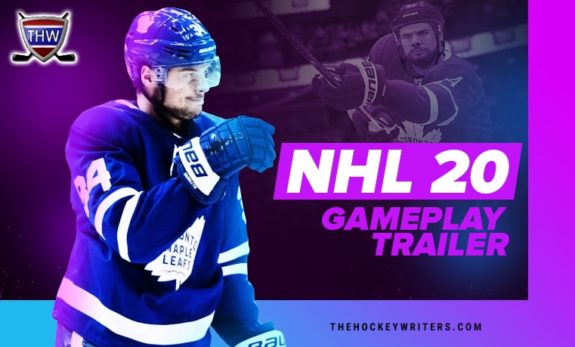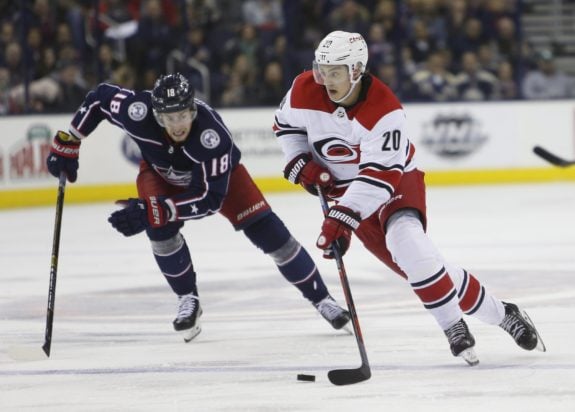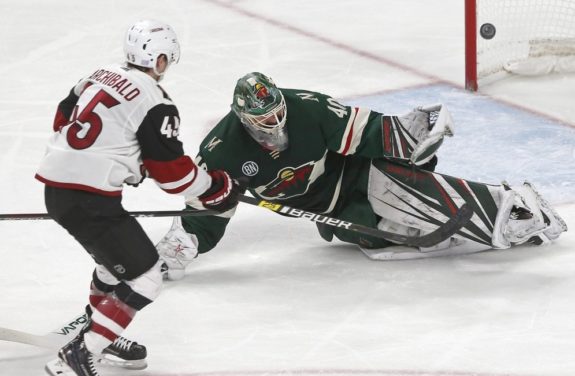EA Sports released the official gameplay trailer for NHL 20, the newest installment in their long-running series. It highlights the newest additions they are making to the game by describing the flaws of NHL 19 and how they have improved upon them:
Some of the new features highlighted in the trailer are Real Player Motion (RPM) Tech 2.0, signature and contextual shots, explosive transitions, and intelligent saves.
RPM Tech 2.0
In NHL 19, EA Sports rolled out “real player motion.” This update drastically changed the way players skate, making it feel far more fluid than the video game’s predecessors. This allowed you to stop on a dime, skate on your edges, and made the game itself look less robotic.
In NHL 20, EA Sports is building upon that with RPM Tech 2.0. The franchise claims this will create “unprecedented improvements to shooting, puck pickups, upper and lower-body fluidity, and goaltender animation.”

While the trailer is cinematic in nature (EA even gives a disclaimer that it is “game engine footage” and that “not all images appear in-game”), it does give fans of the series a glimpse at what this game will look like. If this is what we are to receive from EA, this could be the most realistic installment in the franchise’s history.
Signature & Contextual Shots
In the gameplay trailer, the producers highlight how there were a number of flaws to the shooting mechanics in past renditions of the game. In NHL 19, you would get caught in a shot animation if you were looking to complete a one-timer.
It looked robotic as your player stood in a mid-shot position for some time as the puck made its way from the passer to the shooter. If the puck didn’t make it, the shooter would have to complete the animation by fanning on the shot before the human regained control – even if the puck was nowhere within reach.

Another flaw in NHL 19 was that shooters did indeed fan on many shots unless the pass was perfectly placed. They highlight a few examples of this in the trailer and it is something that frustrated many gamers.
While you may still fan on some shots in NHL 20, the update to the shooting mechanic may make this burden less frequent. Players will now adjust to a pass: if it is slightly off, a player will change his positioning to receive the puck more efficiently.
In the case of a one-timer, the player may stop and reach back for a pass that was behind him or reach forward for a pass far in front of him. These scenarios will take some speed and accuracy off of the shot but reward accurate passes.
In addition, EA Sports has added signature shots, such as Alexander Ovechkin’s prolific one-timed slap shot. They have also installed signature celebrations such as Brad Marchand’s impersonation of Connor McGregor and Evgeny Kuznetsov’s flying eagle.

Lastly, NHL 20 is introducing contextual shots. This allows the shooters to become more effective: rather than continuously entering the same animation, you will now see players adjust their shots based on the situation.
For example, when crashing the net you may see a shooter try to bank the shot in instead of being forced to catch the puck and take a wrist shot. EA Sports states that skaters will take into account “distance from the net, puck placement, and movement when coming out of dekes.”
Explosive Transitions
The video game developers highlighted that in NHL 19, a player would get locked into a path as they received a pass, making smooth transitions into the attacking zone more difficult.
In these instances, humans would lose complete control of their player. They would be forced to glide instead of continuing to move their skates, making it difficult to maintain the intended trajectory upon catching a pass. NHL 20 will apparently put those days in the rearview mirror.

With the new puck pickups feature, players will take the biscuit in stride. They will also pick up the puck more appropriately along the boards and when anticipating the need to turn, and they will also be able to maintain their speed.
This is a big step up from NHL 19: the skater would enter a locked animation in order to receive a pass or going after a loose puck. It seems as though EA Sports is attempting to keep the controller in the hands of humans rather than passing it over to artificial intelligence.
Intelligent Saves
Fans of the franchise have been quite vocal the past few years and it seems to have paid off. EA Sports has failed in the goaltending department in past renditions of the game. Now, the company has listened to its customers and is keen on correcting this, making some NHL 20 wish lists come true.

In NHL 19, even the most elite goaltenders would consistently cough up juicy rebounds and were unable to quickly get back into position after making the initial save. This resulted in goals that fans are not likely to see so frequently in the real NHL.
In NHL 20, goalies will have the ability to control the way they address a shot. This includes anticipating multiple opposing threats, directing shots to the sideboards, and more efficiently smothering the puck when it is loose in the crease. In turn, the goaltenders will now adjust their positioning more appropriately in different situations.
Will NHL 20 Meet Expectations?
EA Sports has effectively gotten gamers excited – but will it live up to the hype? The NHL 20 gameplay trailer is certainly compelling. As a long-time fan of the franchise who felt slightly underwhelmed by NHL 19, I am very much looking forward to the new game.
However, a video game trailer is one thing. Delivering is an entirely different beast. When the NHL 20 Beta eventually rolls out (likely sometime in August), there will most certainly be some glitches. Some of those may not be corrected in time for the full game’s release on Sept. 13.
Still, gamers must be patient and even appreciate the changes EA Sports is making. RPM Tech 1.0 made a significant impact on NHL 19’s realism. That is being built upon in NHL 20 with RPM Tech 2.0. If well-groomed, EA Sports could be providing fans who have stayed away from the series the past few years a reason to get back on the bus.